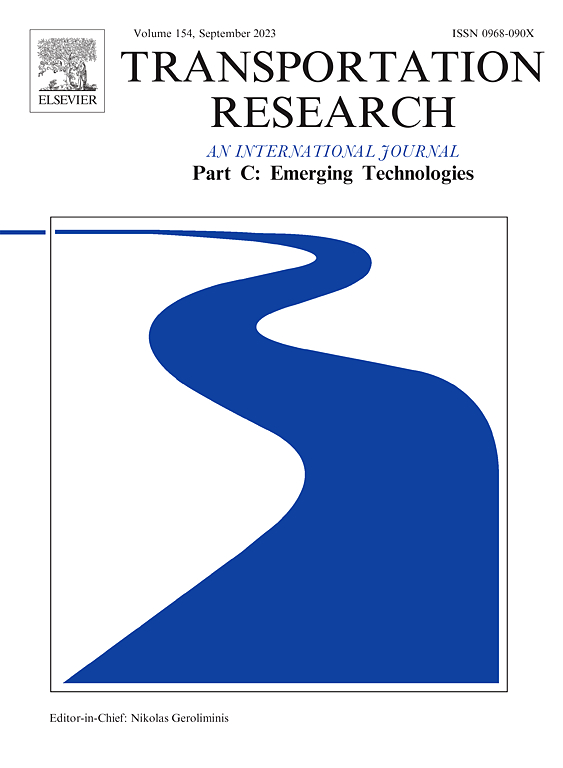Two-echelon prize-collecting vehicle routing with time windows and vehicle synchronization: A branch-and-price approach
IF 7.6
1区 工程技术
Q1 TRANSPORTATION SCIENCE & TECHNOLOGY
Transportation Research Part C-Emerging Technologies
Pub Date : 2025-02-01
DOI:10.1016/j.trc.2024.104987
引用次数: 0
Abstract
The steady growth in e-commerce and grocery deliveries within cities strains the available infrastructure in urban areas by increasing freight movements, aggravating traffic congestion, and air and noise pollution. This research introduces the Two-Echelon Prize-Collecting Vehicle Routing Problem with Time Windows and Vehicle Synchronization, where deliveries are carried out by smaller low- or zero-emission vehicles and larger trucks. Given their capacity restrictions, the smaller vehicles can only deliver small-sized orders and must be replenished via depot locations or larger-sized trucks. Besides replenishing smaller vehicles at satellite locations, larger trucks can deliver small orders and larger items. Managing these two types of fleets in an urban setting under consideration of capacity limitations, tight delivery time windows, vehicle synchronization, and selective order fulfillment is challenging. We model this problem on a time-expanded network and apply network reduction by considering the time window constraints. In addition, we propose a branch-and-price algorithm capable of solving instances with up to 200 customers, which continuously outperforms a state-of-the-art general-purpose optimization solver. Moreover, we present several managerial insights concerning synchronization, vehicles, and the placement of depot/satellite locations.
求助全文
约1分钟内获得全文
求助全文
来源期刊
CiteScore
15.80
自引率
12.00%
发文量
332
审稿时长
64 days
期刊介绍:
Transportation Research: Part C (TR_C) is dedicated to showcasing high-quality, scholarly research that delves into the development, applications, and implications of transportation systems and emerging technologies. Our focus lies not solely on individual technologies, but rather on their broader implications for the planning, design, operation, control, maintenance, and rehabilitation of transportation systems, services, and components. In essence, the intellectual core of the journal revolves around the transportation aspect rather than the technology itself. We actively encourage the integration of quantitative methods from diverse fields such as operations research, control systems, complex networks, computer science, and artificial intelligence. Join us in exploring the intersection of transportation systems and emerging technologies to drive innovation and progress in the field.

 求助内容:
求助内容: 应助结果提醒方式:
应助结果提醒方式:


